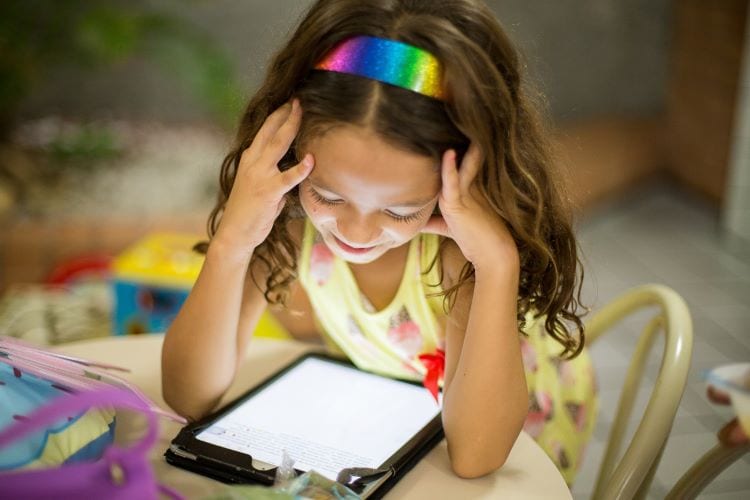5 Educational Programs for Your Child’s Tablet

“With great power comes great responsibility.” It’s not just a phrase for superheroes. The tablet, phone, or iPad at your child’s fingertips can instantly expose him to all sorts of content, and not all of it is good. Okay, most of it isn’t good.
In order to make sure that your child’s screen time is spent enjoying safe and productive activities instead of falling down the black hole of YouTube, check out these five educational apps. Each has been tested and approved by educators and parents alike.
Bedtime Math: An App For Math
If you gave an elementary school student a choice between Minecraft and mathematics, we all know what he’d pick. Finding an app that makes math appealing, fun, and productive is tricky, but Bedtime Math seems to have mastered the magic formula.
Bedtime Math does more than drill facts and teach rote memorization. Instead, it uses visuals and narratives to help your child build math skills and make real sense of math concepts. Think of it as the equivalent of reading a bedtime story, but for math instead of literacy skills.
Bedtime Math is a free program (bonus!) that offers a daily word problem that you and your child can solve each night – or anytime, really. The word problem exercises use a story or interesting fact, with the choice of four difficulty levels from Pre-K through elementary, to make the math interesting and relevant. (You can also get the book from Amazon.)
The Human Body: An App for Science
Though this app isn’t free, it’s well worth the $4 it’ll cost you in the Apple App Store. This educational program gives your child a chance to explore the human anatomy and all of its functions. The app makes jumping between organs and systems easily, so your child can watch and understand exactly how and where normal actions like chewing and digesting food occur.
Even better, the app offers realistic visuals without being too graphic. The sound effects aren’t just goofy; the gurgles, spurts, and creaks are true-to-life to help children appreciate what’s happening inside of their own bodies.
Overall, this app doesn’t just offer boring anatomical lessons. It provides a clever and engaging way to help curious minds follow their fascinations. It’s best for ages 5 and up, but since reading is optional, younger inquisitive minds can also have fun exploring.
Booksy: An App for New Readers
Booksy is a learn-to-read program that helps children between 4 and 9 years old build their reading skills. It serves as “training wheels” to give your child independence with room for growth as a more capable reader.
The science, math, social studies, and fiction books available in the app are written by educators, experts, and even PhDs, and they come with full-color images and illustrations. Your child can tap on any unknown word to hear it pronounced, and quizzes are available to test and confirm reading comprehension.
Since Booksy is still growing, it’s adding, and your child will receive access to new books each week.
Daniel Tiger’s Grr-ific Feelings: An App For Social Learning
Education isn’t just about math, science, and literacy. Social and emotional learning is also critical for every child. Daniel Tiger’s Grr-ific Feelings gives younger children between 2 and 6 a fun way to identify and explore emotions using art, songs, and games.
Based on the beloved PBS character, this app can help your child learn to experience, talk about, and understand important emotions: for example, feeling angry and happy, the best techniques to calm down after a disagreement, and how to share.
The Bottom Line
These four educational programs only scratch the surface of what’s available, but they’re all excellent places to start. Regardless of your child’s age or interests, you can easily browse through the app store and find a program that is far more nutritious than Candy Crush.
Read about micro-investing and how to get started with our complete guide: Micro-Investing: What It Is, Why It’s for You and How to Start.










